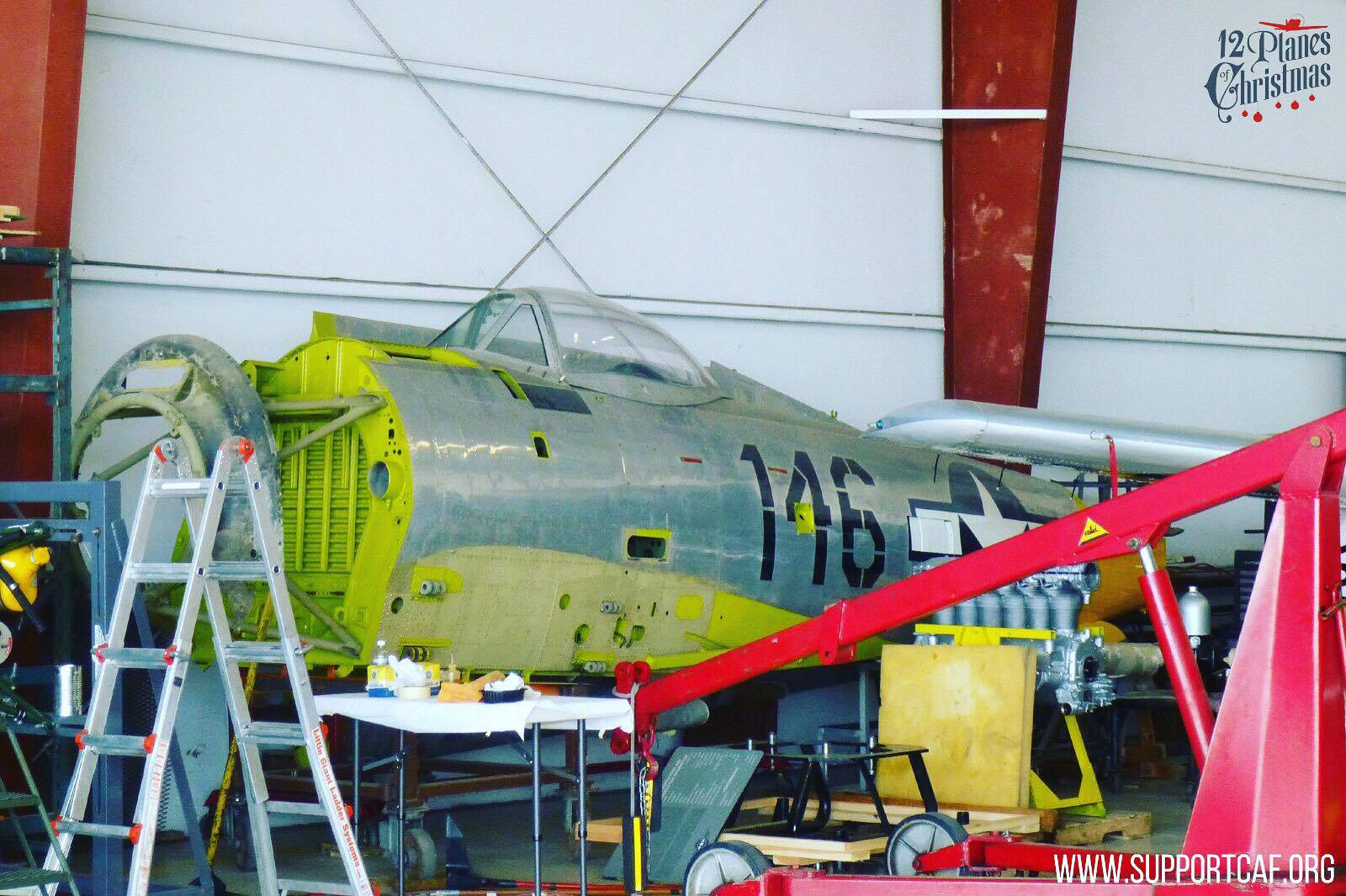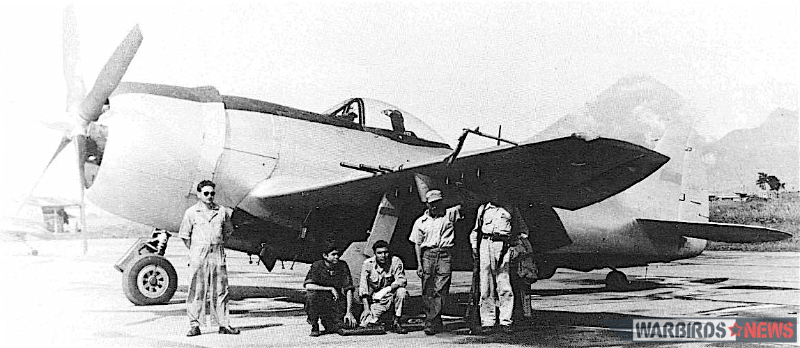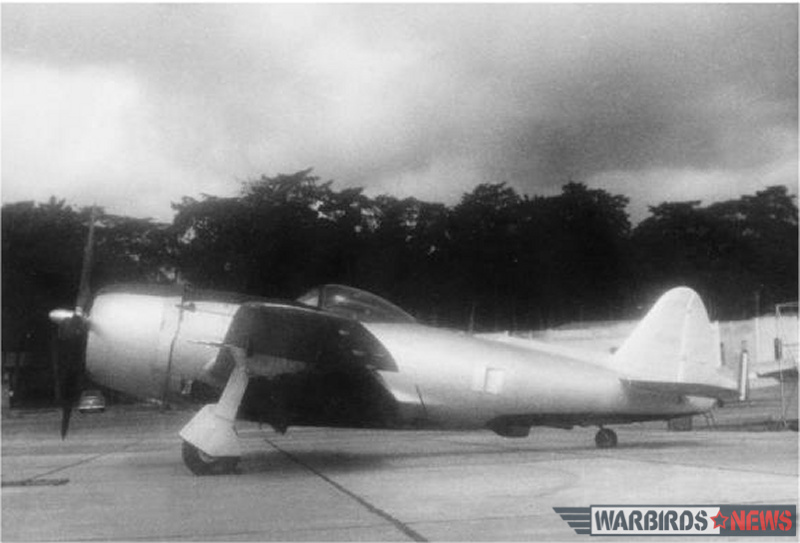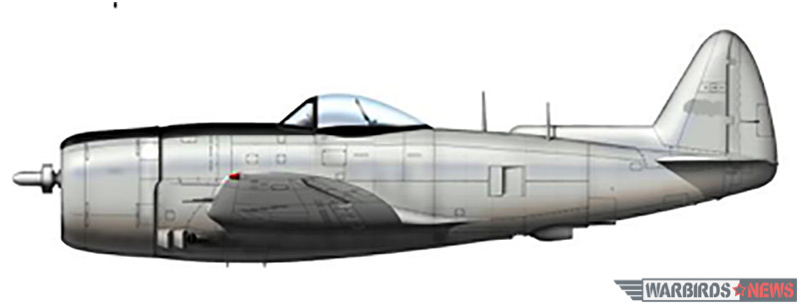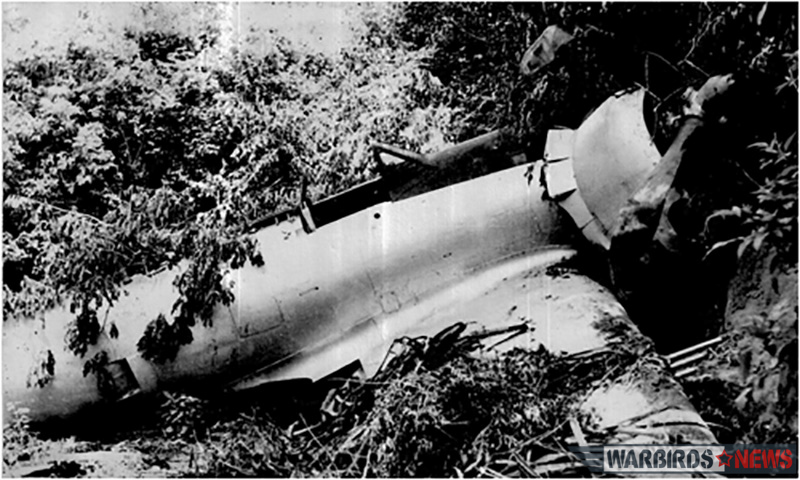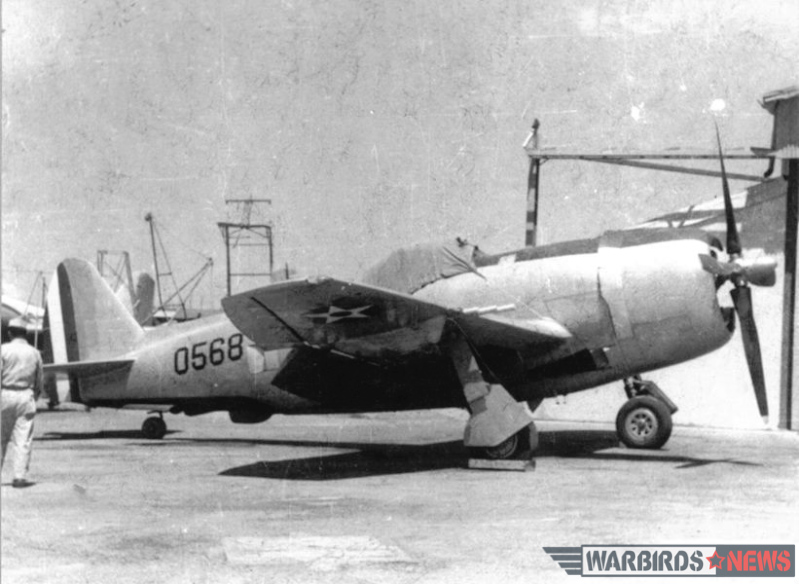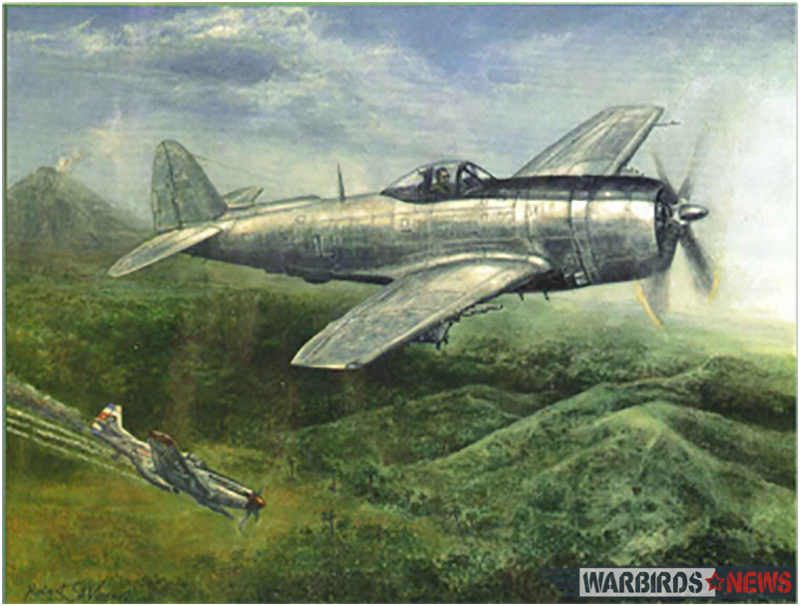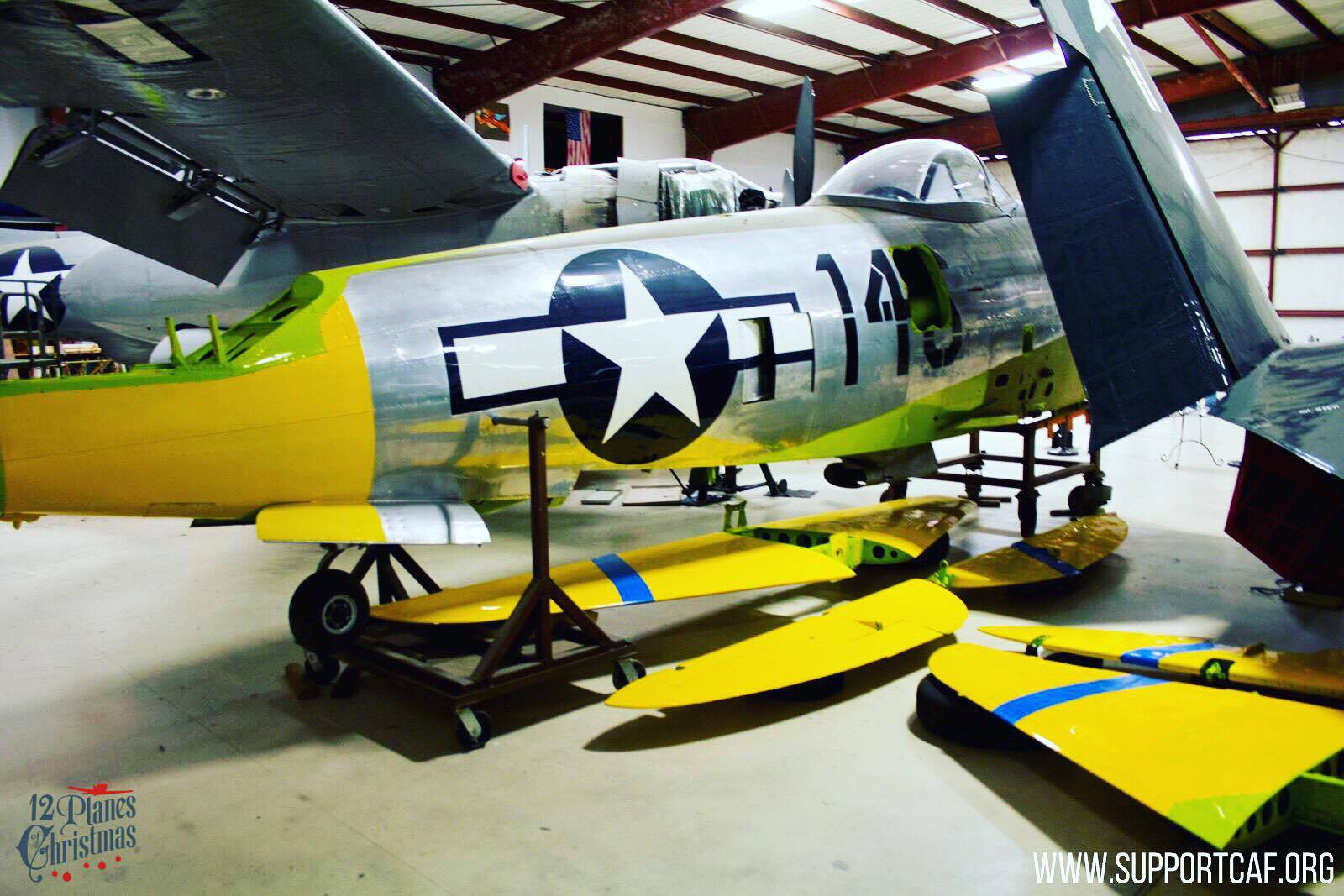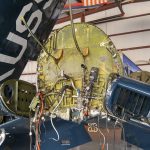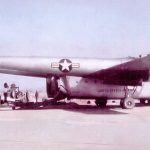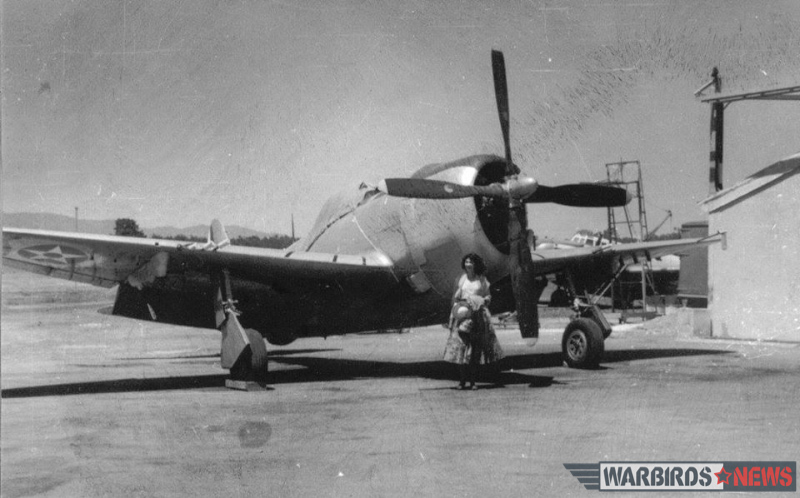
The P-47 Thunderbolt was a massive fighter aircraft by WWII standards, but it excelled in combat none-the-less. It could carry a huge payload, and was used to great effect in the ground-attack role. Despite its bulk, several of Americas top-scoring fighter pilots in the European Theatre, such as Gabby Gabreski (28 victories) and Robert S. Johnson (27 victories), flew the bulk of their WWII combat sorties in Thunderbolts. In fact, the 8th Air Force’s top scoring 56th Fighter Group flew the P-47 exclusively throughout WWII. But the aircraft, regardless of its successes, did not enjoy the same post-WWII longevity of the P-51 Mustang, its sleeker, sexier competitor.
Only a handful of Thunderbolts survived in the US inventory to become F-47s when the US Air Force became an independent air arm in 1947. Some of these ended up being transferred to foreign air arms under the Mutual Defense Assistance Act of 1949. One of these aircraft was P-47N Thunderbolt 44-89136, now owned by the Commemorative Air Force. This Thunderbolt is part way through a major restoration following an inflight engine fire and forced landing in March, 2002. While a lot of work is now complete, including a freshly refurbished fuselage, the project needs an injection of cash before it can take to once again become a rare, flying example of the breed. You can help her reach this goal by contributing to the CAF’s 12 Planes of Christmas which is fast drawing to a close for the 2016 tax year. Click HERE to learn how you can help!
While this particular Thunderbolt did not see combat while serving with the US military, it did have an interesting career south of the border in Central America. We received a great article on her Latin American history from Augusto de León Fajardo, and thought our readers would enjoy learning more about this historic airframe.
The dissasembled Republic F-47N Thunderbolt 44-89136 currently stored inside a hangar in Addison, Texas, was a legend in Guatemala and Nicaragua during its service there.
She went to the Nicaraguan Air Force (Fuerza Aérea de la Guardia Nacional) on June 24th, 1954, coming from the retiring Puerto Rico Air National Guard (PRANG) stock with two other examples. They joined three F-47Ns which had arrived in Nicaragua six days earlier. Nicaragua had already loaned two of these F-47s to the Liberation Army of Guatemala`s Air Force on June 18th, for its planned 10 day campaign against the leftist Guatemalan government.
Both of the Liberation Army’s F-47s were soon out of operation due to hard landings to one aircraft on June 19th and the other on June 21st, which damaged their undercarriage. Spare parts were non-existent on site, so Nicaragua sent a third Thunderbolt to the Guatemalans on June 22nd. That airplane experienced engine failure soon after, so two of Nicaragua’s latest F-47 arrivals, including the 44-89136, immediately supplemented the depleted Guatemalan rebel forces. One of them suffered heavy anti-aircraft fire damage during a bombing mission on June 25th, knocking her out of action too, so Nicaragua sent their sixth and final F-47N to the cause. This smallest of air forces had just one operative airplane some days and none on others. At most there were only ever two simultaneously operable F-47Ns to fly the planned, twice-daily missions. The airplanes flew without markings, in an overall coat of silver paint with a black, anti-glare panel in front of the cockpit.
Since the F-47Ns flew in pairs at most, and due to malfunctions, accidents and battle damage, not to mention there only being three pilots, it was as if only two airplanes existed in the fleet. One Thunderbolt took a serious hit from anti-arcraft fire on the last day of aerial operations. The pilot tried to land his stricken fighter on a dirt strip in liberated territory, but it was too short and the aircraft overran the runway and then proceeded to bounce down a ravine. The pilot was lucky enough to survive, but the Thunderbolt was a write-off. It was the only loss of the entire air campaign.
Of the six Thunderbolts to serve the Guatemalan rebels, only 44-89136 escaped unscathed from the 32 missions flown in support of the insurgent land operations which culminated in the collapse of Guatemala’s sitting government. As a result, it was the only example incorporated into the unified Guatemalan Air Force on July 3rd, 1954. The Thunderbolt was popularly known in Guatemala as The Sulfur, or El Sulfato; a nickname the Guatemalan people bestowed upon the aircraft, because of the effect their presence over Guatemala City had upon government officials at the time. The author is currently trying to determine which missions 44-89136 flew during the conflict.
After the end of hostilities, an Agreement to unite the National Army with the Liberation Army into a new Guatemalan Army solved the final situation of “one country, two armies”. This F-47N arrived solo at La Aurora air base in Guatemala City. Gerald Delarm Amador was at the controls. Two weeks later, she received Guatemalan Air Force colors and serial number 0658. She flew solely to train two guatemalan pilots on the type, while the other pilots in training at the time learned to fly the new F-51D Mustangs that the Air Force began to receive in those same days.
Interestingly, even though major fighting was over, the conflict sparked up again briefly following the rebel victory. A small force, composed mainly of Military School cadets, fired upon a Hospital under construction which was temporarily housing a detachment of the rebel Liberation Army that had come to Guatemala City to join in a combined parade the day before. The cadets were demanding the disolution of the Liberation Army, still a parallel force, and the inmediate formation of a new National Army, in advance of the date previously agreed upon. Gerald Delarm Amador flew a sortie in his lone F-47 during this skirmish on August 2nd, but the Air Force grounded the fighter soon after, declaring itself unwilling to fire upon the cadets.
On December 13th 1954, Delarm Amador flew The Sulfur back to Managua, Nicaragua, to return her to the Nicaraguan Air Force, who kept it without markings. In exchange, the Guatemalan Air Force received an ex-Swedish Air Force F-51D Mustang. Amador continued to fly the 44-89136 for Nicaragua. On January 15th, 1955, during a border dispute with Costa Rica, Amador shot down an opposing F-51D Mustang with his Thunderbolt. And thus, 44-89136 was the last F-47N ever to have an aerial victory.
Some time later, 44-89136 finally received her Nicaraguan colors, wearing the military serial number GN-71. She never fired her guns in anger again, serving Nicaragua peacefully until the end of her military service in 1963. One of the CAF’s founding members, Lloyd P. Nolen, bought the Thunderbolt on February 11th, 1963 and brought her back to the USA to become part of the nascent Confederate Air Force (now known as the Commemorative Air Force). And there her American history began again…
WarbirdsNews wishes to thank Augusto de León Fajardo for his fascinating story. We hope that some of our readers might contribute to the P-47’s restoration HERE. According to the CAF... To begin the next phase of putting the P-47 back in the air, the project needs a clear survey and assessment. In particular, the carry-through spars need to be carefully inspected for corrosion. Currently several of these spars appear to have surface corrosion, not uncommon due to the haste with which these 4 spars were made during World War II. It will also need to be determined if the wings can still be made airworthy. Additional areas needing close inspection include: the engine mounts, the propeller hub, the fuel tanks and the cowling and cowl flap assemblies.








